INTRODUCTION
An oft asked question from property owners is, “What is my commercial property worth?” There are a number of items that determine property valuation with the two (2) primary items being the Property Characteristics and the Current Market Conditions. We will go through these in detail below to see how they affect value.
PROPERTY CHARACTERISTICS
Property characteristics include items that make the property unique, such as its location, the size of the property and the jurisdiction the property is located in.
Location
Property location can have a significant impact on a property’s value. What is located next door to the property, is the property more rural, more suburban or more in the city, is it near a greenbelt or park, are the nearby roads in good condition are examples of how location can influence value.
Does it have convenient access to and from the property via roadways that make it convenient to travel to and from?
What is the property’s proximity to like uses and how successful are these other businesses. This can be a measure of the quality of the location assuming that there aren’t too many of the same business types located in a particular location.
What is the property’s proximity to beneficial uses. For example if the property is a single family or multifamily subdivision, how close is the property to a grocery store and other retail services?
How safe is the area that the property is located? Will crime be a concern for a purchaser of the property?
Jurisdiction
The jurisdiction or governmental entity that the property is located in will impact a property’s value. If the property is in the city limits for example, does the property have the correct zoning or if not can the zoning be changed? If it is in the extra territorial jurisdiction (ETJ, a 3-5 mile area outside the city limits with some city controls) the use of the property may not be as stringent but utility availability may be scarce. Also for some land uses the further away from the city that they are located makes them not as valued as those convenient to other uses. Generally speaking a property will have the most governmental controls if located in the city, and less control if located in the city’s ETJ and even less
in the County. Also the actual zoning category for the property will impact its value. A parcel of land zoned for retail use will be worth more than a parcel zoned for single family homes for example.
Property Size
What is the size of the parcel of land? Unless there is a nearby amenity like a river, or ocean, or the property is in a premiere location such as the middle of downtown, the larger the parcel of land equates to more value to a property.
in the County. Also the actual zoning category for the property will impact its value. A parcel of land zoned for retail use will be worth more than a parcel zoned for single family homes for example.
Buildings / Structures
Is there a building or structure on the parcel of land and if so how big is it, how old is it and can it be used for the intended use of the property. All of these characteristics together will determine the property’s value.
Utilities
If the property is unimproved land, what utilities (primarily water and sewer) are available at the property? The lack of water and gravity sewer service at a property can be a major stumbling block for a buyer. If the utilities are not at the property or are not nearby the property then the buyer is looking at unexpected expenses that can make the improvement of the property too expensive and outside their budgeted amount for acquiring land. Most commercial land uses require water and sewer service. Some uses such as warehouse or light industrial might be able to make the project work with water and a septic sewer system.
Topography
If the property is raw, unimproved land, what is the topography like? Is it level, or hilly? Is it filled with ravines and steep slopes or is it somewhere in between. There is a cost to level or being to grade a property to make it more level and useable and this can be expensive.
Amenities
Does the property have amenities and are the amenities such that they increase the value of the property. Large, hardwood trees on a property can be an amenity. Single family homes built next to an adjacent greenbelt or land preserve is a plus. A workout room in an office building or a lake on single family subdivision land or very good roadway access for a distribution center can all tip the scales towards an amenity increasing the value of a property.
Similar Properties For Sale
Like comparable property sales, comparable properties for sale can be helpful when valuing a property. However, careful review and consideration of the property for sales’ characteristics should be undertaken. An asking price is never as good as a sales price and if you consider asking price in your cost analysis you need to make sure that the property you are comparing it to has similar characteristics and is truly comparable. The other area of concern is that as opposed to a sales price, an asking price can be way off base and a mistake by another listing agent – be it too high or too low. A good practice would be to determine if there are multiple properties of similar characteristics and similar pricing for sale in a particular area. This then would provide better market price assurance.
Market Conditions
Market Conditions can certainly effect a property’s value and the time it may take to sell. The number of similar properties for sale in the area, the number of buyers, the interest rate that a lender is charging to finance a property can all have an impact on your property’s value. If there are a lot of buyers competing for few properties it’s described as a seller’s market and prices will be higher than may be expected. Conversely, a market with fewer buyers, but many properties is referred to as a buyer’s market and prices will generally be lower than the norm. If you’re selling in a buyer’s market, you may have to adjust the price downward to attract more offers or be willing to make concessions to the buyer.
Additionally, market conditions can affect how long it takes your property to sell. In a seller’s market, properties tend to sell quickly, whereas in a buyer’s market it’s typical for properties to be on the market for longer periods of time
Floodplain
Is the property in the Federal Emergency Management Agency (FEMA) established floodplain? If so, how much of the site is in the floodplain? A small amount of floodplain area may be insignificant but a more sizable portion may make the property unaffordable and un-developable. Floodplain land is generally viewed by a buyer as “unusable” land meaning that building improvements cannot be built in the floodplain and therefore floodplain land is perceived as having little to no value to a property. In some instances floodplain can be used to create ponds, lakes, greenbelts, hiking areas and can be incorporated as an amenity but this may not help if a substantial amount of the property is unusable. There is a regulatory process that a buyer can go through to improve floodplain property by removing topsoil from the floodplain area and building up other areas in the floodplain until their new elevation brings the area out of the floodplain. This can be an expensive and time consuming process so its usefulness is limited.
Trees
For new development or a buyer that wants to expand the size of a project, then it is important to figure out if the tree locations work with the site’s hardscape layout. Trees area a positive for a development project but they need to be of a size and location that works with the planned improvements on the property. Otherwise a site with great trees may not be the best for the Buyer. A site with great trees may not matter as well if the property is located in a jurisdiction where tree removal is limited or if tree removal / replacement is very aggressive. This is where a tree survey comes in handy so that you can learn while planning a project if the property can be developed in conjunction with the existing trees or if it is problematic because the tree removal is restricted and or a layout that provides for the trees as well as the improvements cannot be built.
MARKETPLACE CONSIDERATIONS
Comparable Sales
What are comparable properties selling for? When determining the value of a property, the recent sales price for a similar, nearby property, should be a primary part of the analysis for determining property value. A recent sale can be a very good indicator of the value of another property especially if it shares similar characteristics and as mentioned is in proximity to it.
Economic Conditions
Another key factor that affects the value of real estate is the overall health of the economy. This is generally measured by economic indicators such as the gross domestic product [GDP], consumption, investment, international trade, central government budgets, consumer product prices, the money supply, and the balance of payments. It’s a safe bet that when the economy is sluggish, so is real estate.
Additionally, market conditions can affect how long it takes your property to sell. In a seller’s market, properties tend to sell quickly, whereas in a buyer’s market it’s typical for properties to be on the market for longer periods of time



